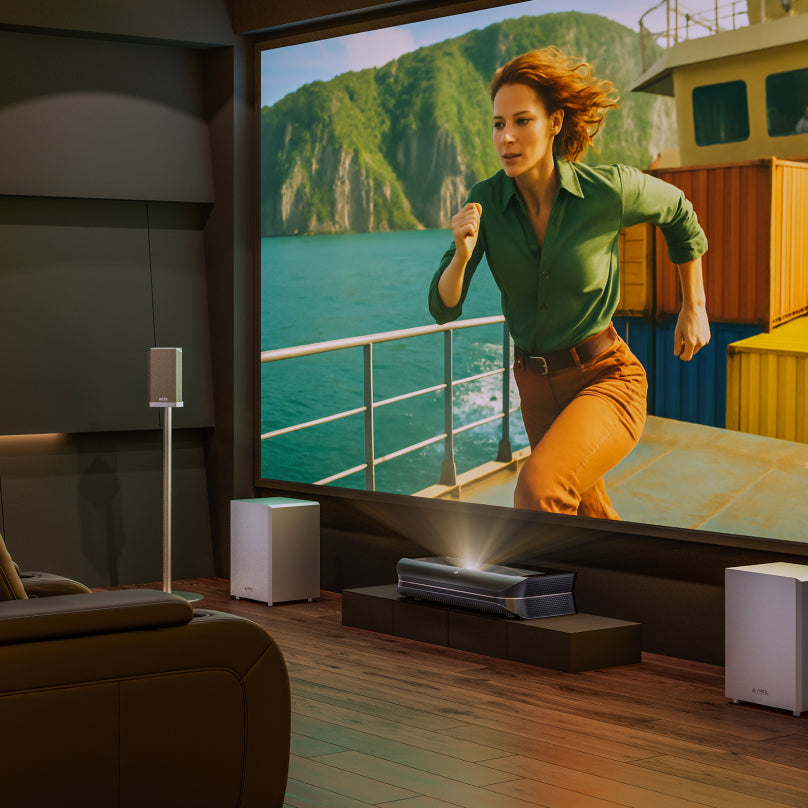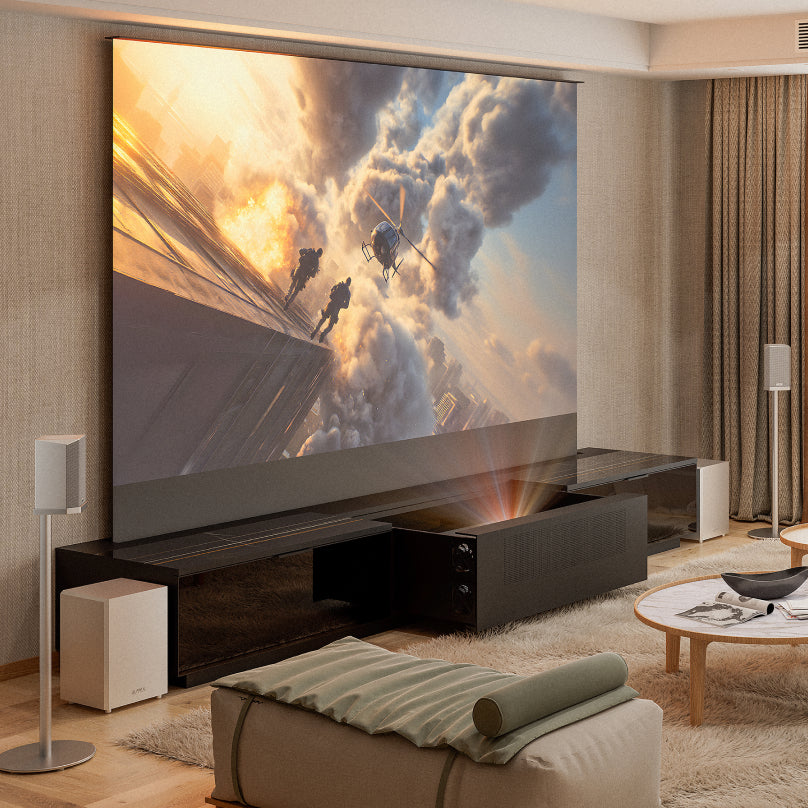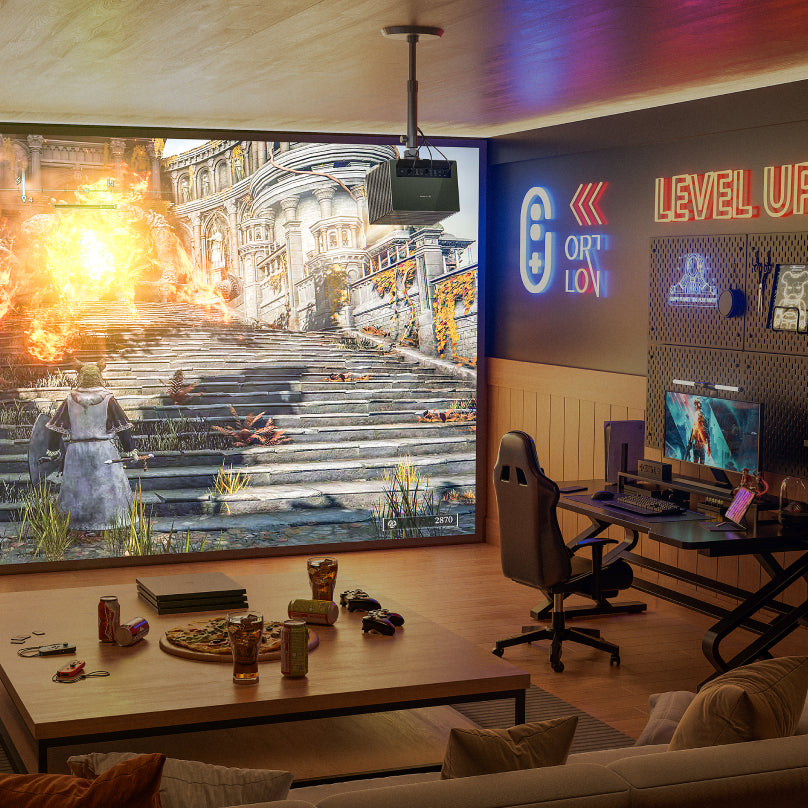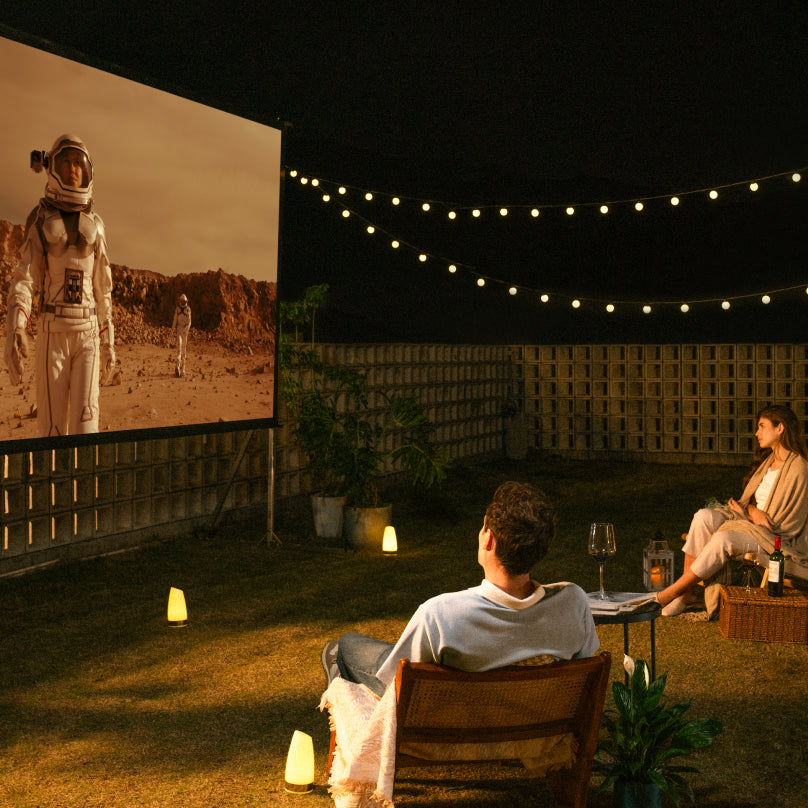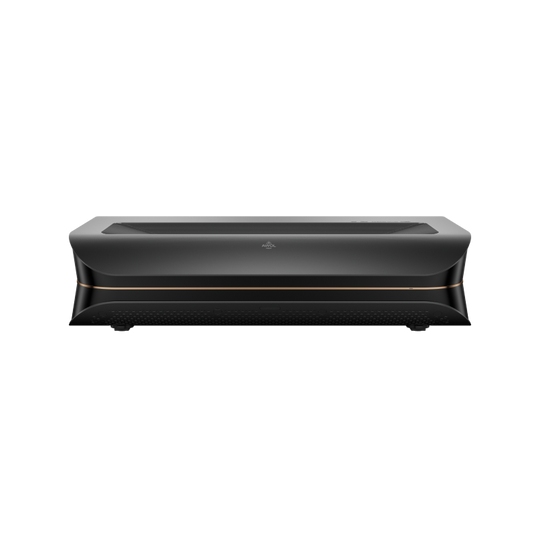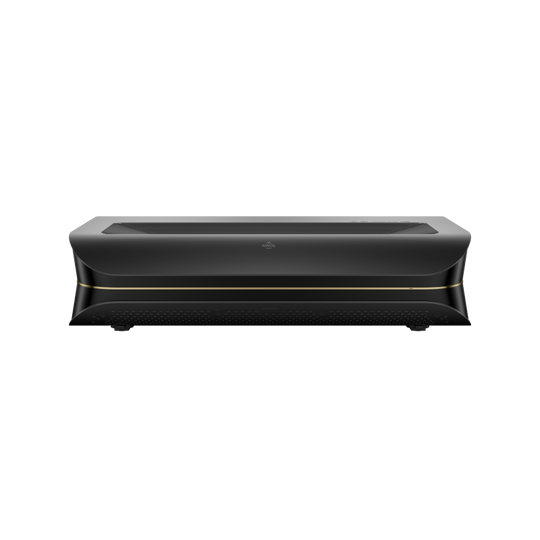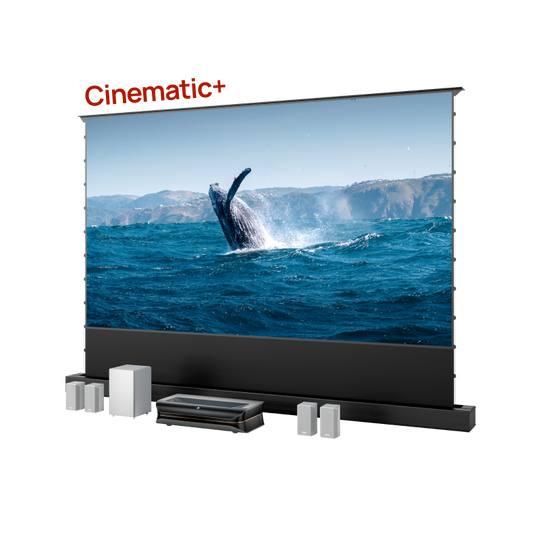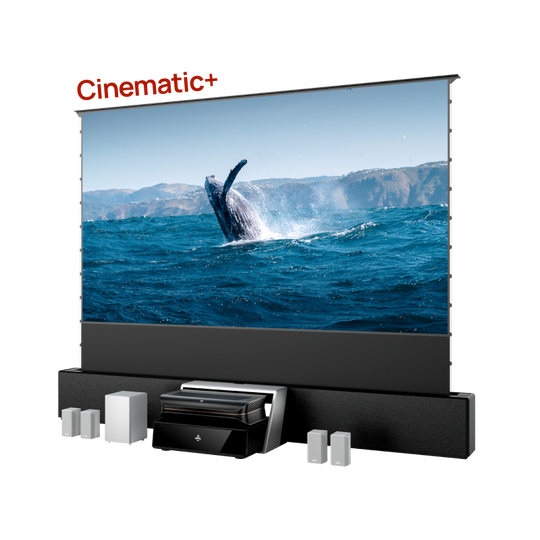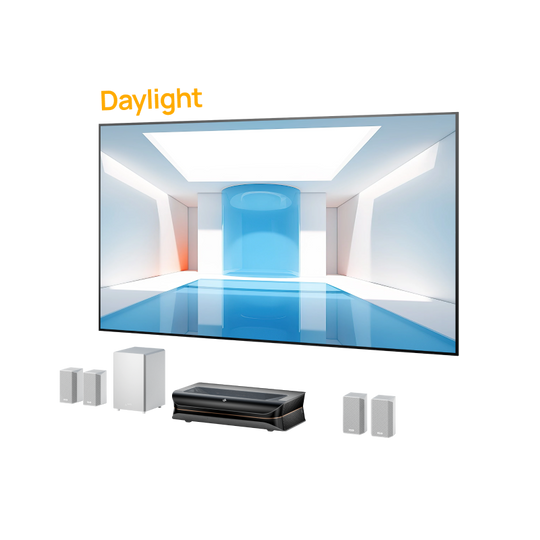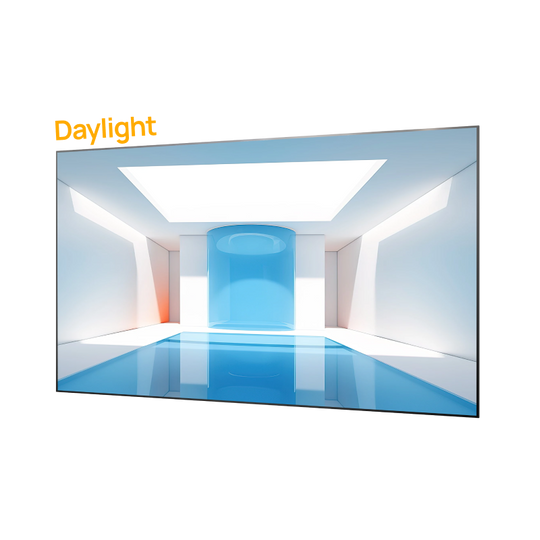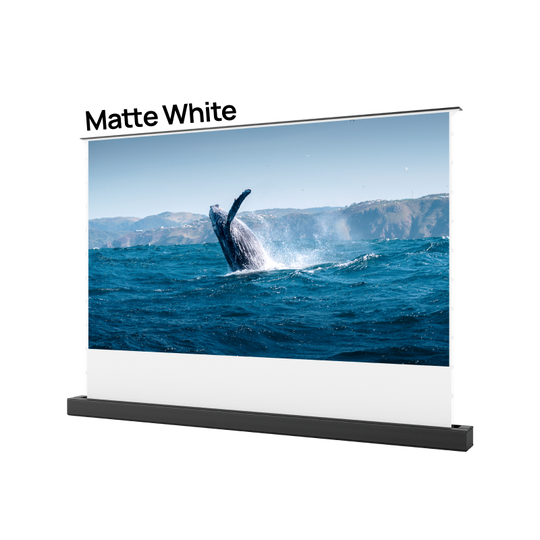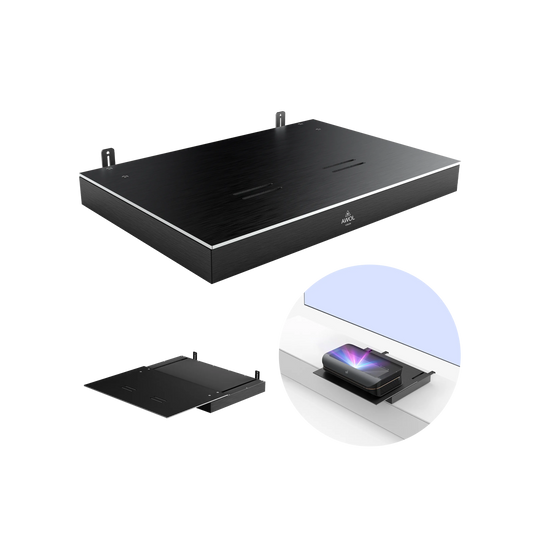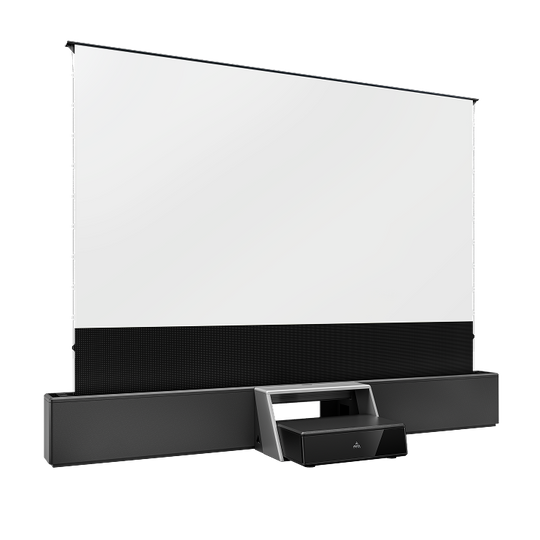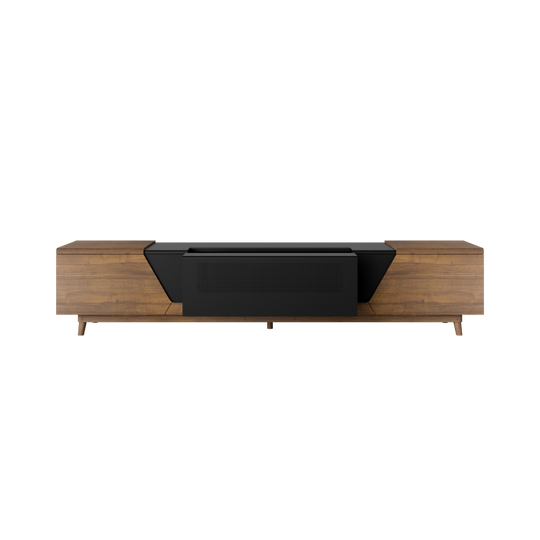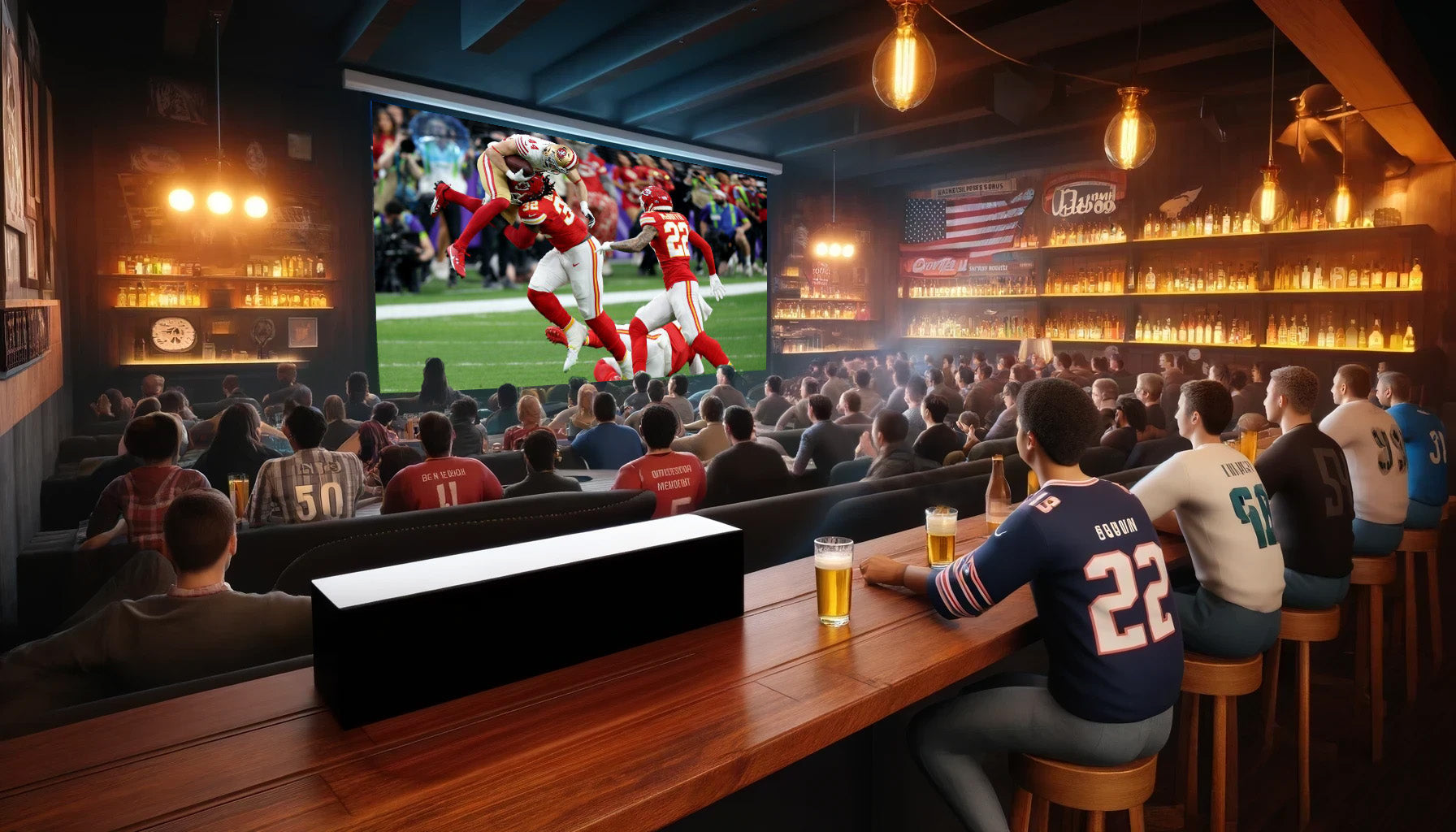Home theaters are now a popular choice for entertainment. More people prefer to enjoy movies at home instead of buying tickets. They replicate movie theaters' visual and audio quality, and you can enjoy this in the comfort of your living room.
As the demand for home theaters grows, companies constantly develop new products to enhance the viewing experience. One such innovation is the floor-rising projector screen. This advanced projector screen has revolutionized home cinema setups, offering flexibility, space-saving design, and convenience.
What Is a Floor Rising Projector Screen?
A floor-rising projector screen is a motorized screen that rises from the floor to your chosen height with a button press. Unlike traditional projector screens, which stay on the wall or ceiling, the floor-rising screen hides in a case when not in use, making it an excellent choice for saving space.
This unique screen design seamlessly integrates into your living space, offering a clean and modern look. It occupies no visible space when retracted, keeping your room uncluttered and free from a permanent screen.

Key Features of Floor-Rising Projector Screens
Floor-rising projector screens stand out because of their motorized functionality and space-saving design. These screens offer several distinct advantages:
- Motorized Operation: A motorized mechanism allows you to raise or lower the screen using a remote control. This eliminates manual adjustments, adding convenience and enhancing your home theater experience.
- Space-Saving Design: The floor-rising projector screen is hidden within a housing unit when not in use, offering a more minimalist look than traditional screens. This feature mainly benefits people with limited space or who want to tidy their living rooms.
- Ideal for Ultra Short Throw (UST) Projectors: Floor-rising screens are perfect for use with UST projectors, which can project a large image from a very short distance. Combining these two technologies allows for an immersive viewing experience, especially in rooms with premium space.
Why Do You Need a Floor-Rising Projector Screen?
There are several reasons why a floor-rising projector screen might be the perfect addition to your home theater setup:
- Space Efficiency: Unlike wall-mounted or ceiling-installed screens, a floor-rising screen can be tucked away when unused, allowing you to reclaim space in your living room. It’s ideal for rooms where you want a clean, uncluttered look when the screen is not needed.
- Improved Aesthetics: A sleek floor-rising projector screen integrates well with various home decor styles. When retracted, the screen is ultimately out of sight, preserving the aesthetic of your space.
- Convenience and Flexibility: The motorized operation of the floor-rising projector screen means you don’t have to pull or adjust the screen manually. Simply use the remote control to raise or lower it to your preferred height.
- Perfect for UST Projectors: Floor-rising screens are designed to work seamlessly with ultra-short-throw (UST) projectors, which can project large images from very short distances. This pairing is ideal for rooms with limited space and ensures you can enjoy a large, high-quality image even in smaller rooms.
Installation and Setup of Floor Rising Projector Screens
Installing a floor-rising projector screen is straightforward, especially compared to wall-mounted screens that require precise installation and may need permanent fixtures. Here’s a general overview of how to set up a floor-rising projector screen:
- Choose the Right Location: Position the screen to allow easy access to the power outlet and ensure the screen can fully extend without obstruction.
- Place the Screen: The screen typically has a base unit that houses the motor and screen material. Simply place the base on the floor and secure it in the desired spot.
- Plug in the Power: Connect the power cable to the screen and plug it into a nearby electrical outlet to power the motor.
- Remote Control Setup: Use the included remote control to operate the screen. You can adjust its height, raise or lower it, and even set custom height preferences.
- Integrating with UST Projectors: If you're using a UST projector, connect the USB synchronized trigger to the projector’s USB port. This will allow the screen to automatically rise when the projector is powered on and lower when the projector is turned off.
Maintenance Tips for Floor-Rising Projector Screens
To ensure your floor-rising projector screen remains in top condition, follow these simple maintenance tips:
- Roll the Screen Back After Use: Always retract the screen to prevent dust and debris from accumulating. This helps maintain the screen’s surface and ensures it stays clean.
- Use a Soft Cloth for Cleaning: Gently wipe the screen horizontally with a soft microfiber cloth. Avoid wiping vertically, as this may damage the screen material.
- Avoid Scratches and Fingerprints: Always handle the screen carefully to avoid leaving fingerprints or scratches, which can affect the display quality.
- Check for Obstructions: Ensure no objects are placed on or near the screen when retracting to avoid damage to the motorized mechanism.
Conclusion
A floor-rising projector screen is a smart choice for home theater fans. It offers flexibility, convenience, and space savings. Its motorized operation and ability to work well with UST projectors make it a great option.
This is perfect for anyone wanting to improve their viewing experience. The floor-rising screen is excellent for movies, gaming, and business presentations. It offers a smooth and professional experience and enhances any space, making it more immersive.
Pair your floor-rising screen with a good UST projector for the best home theater setup. This way, you can enjoy a great movie experience without consuming too much space.
